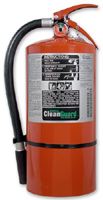 |
 |
| MSDS Topics |
Free Sites | FAQ's | Regulations | Glossary | Software | Suppliers |
| Books | Forum | Poll | Fun stuff | Quiz | Store | |
| MSDS and safety supplies | Search ALL our MSDS info | |||||
 | |||
 |
 |
 |
|
| Title: 04/15/2011 - Requirements for including a manufacturer's occupational exposure limit (OEL) on a material safety data sheet (MSDS). | |
| Record Type: Interpretation | Standard Number: 1910.1200; 1910.1200(g)(2)(i)(C)(1); 1910.1200(g)(2)(vi) |
ILPI Notes: This interpretation is based on and references the HCS 1994 which is now obsolete. It references portions of the standard that have since been deleted or changed, however, the basic thrust of the interpretation may still be valid under the current regulation.
April 15, 2011
Mr. Lance Edwards
National Paint & Coatings Association, Inc.
1500 Rhode Island Ave., NW
Washington, DC 20005-5597
Dear Mr. Edwards:
Thank you for your August 14, 2009, letter to the Occupational Safety and Health Administration's (OSHA's) Directorate of Enforcement Programs concerning your question regarding OSHA's Hazard Communication standard, 29 CFR 1910.1200, regarding the requirements for providing a manufacturer's occupational exposure limit (OEL) on a material safety data sheet (MSDS). We apologize for the delay in responding to your question. This letter constitutes OSHA's interpretation only of the requirements herein, and may not be applicable to any situation not delineated within your original correspondence. Your question and background information have been paraphrased below followed by our reply.
Background: In 2009 the American Conference of Governmental Industrial Hygienists (ACGIH) published a reciprocal calculation procedure (RCP) to use for deriving an OEL for certain refined hydrocarbon solvent (RHS) vapor mixtures. The procedure is provided in Appendix H of the ACGIH Threshold Limit Value and Biological Exposure Indices (TLVs/BEIs) (ACGIH Book). The National Paint & Coatings Association/Federation of Societies for Coating Technology (NPCA/FSCT) is requesting clarification from OSHA on how an RPC-OEL is to be treated on an MSDS.
When a manufacturer produces a paint or coating, the formulation typically includes a mixture of RHSs from various suppliers. Many suppliers provide their solvents with an MSDS that includes an OEL calculated with the RCP method (RCP-OEL). The NPCA/FSCT contends that any RCP-OEL provided on a supplier's MSDS should not be required by OSHA to be used or reproduced on the MSDS prepared by the manufacturer of the coating because the RCP-OEL is not a TLV. Additionally, the NPCA/FSCT feels that while RCP-OELs are useful during the formulation process, once blended with other materials these RCP-OELs for the solvents become meaningless for the end-user. This is because the component RCP-OELs no longer apply to the blended mixture. Furthermore, in most cases the MSDS for a given solvent does not contain adequate information to calculate an RCP-OEL for the final mixture of the blended solvents in the coating or paint.
Question: When a supplier of an RHS provides an RCP-OEL value on their product MSDS, would a paint or coating manufacturer have to include that value on the MSDS for their formulated product, and would they need to calculate a new RCP-OEL for the mixture?
Reply: OSHA's Hazard Communication standard at paragraph 1910.1200(g)(2)(i)(C)(1), requires that manufacturers of any product containing a mixture of hazardous ingredients must include on the product's MSDS certain information about these ingredients. This includes, per paragraph 1910.1200(g)(2)(vi), the "OSHA , ACGIH Threshold Limit Value, and any other exposure limit used or recommended by the chemical manufacturer, importer, or employer preparing the material safety data sheet, where available."

The official, public domain, OSHA version of this document is available at http://www.osha.gov/pls/oshaweb/owadisp.show_document?p_table=INTERPRETATIONS&p_id=28331&p_text_version=FALSE